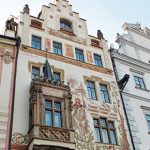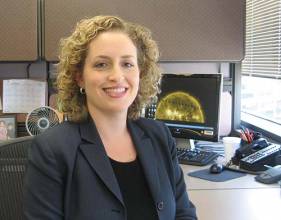Ivan Revnivykh’s life and experience encompass the far frontiers of his homeland, Russia, from the magnifi cent landscapes of the country’s Pacifi c coast to research stations in Antarctica, to the great capital city of Moscow where he lives and works today. To everything he does he brings a sense of excitement and adventure.
IVAN REVNIVYKH IS HEAD OF GLONASS Application Division at Roscosmos. His academic career included study and research in France and Italy, and he currently represents GLONASS in numerous international cooperative actions, all of which makes him a familiar face among the global satellite-based navigation community.
“I grew up in the countryside outside of Moscow,” Revnivykh told Inside GNSS. “My home town is Korolyov, near Elk Island National Park.” Not coincidentally, Korolyov is also the home of the Russian space engineering and ISS mission control center.
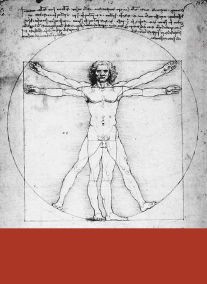
Revnivykh was born with a passion for GNSS in his blood. His father is the noted GLONASS expert Sergey Revnivykh. Ivan Revnivykh said, “My father started working for the space fl ight mission control center of the Central Research Institute of Machine Building (TsNIImash) in 1978, before I was born.”
The senior Revnivykh had many important tasks to carry out within the Russian space program, but he made time for his son, sometimes mingling professional and fatherly responsibilities, as when he occasionally took his son with him to the mission control center on weekends. Th ese were important experiences for the youngster, and the memories, Ivan said, have remained with him all through his life.
Th us, young Ivan was always aware of and interested in the work his father was doing. And who wouldn’t be? Since 1995, father Sergey has been in charge of national and international projects in satellite navigation on behalf of Roscosmos, the Russian State Space Corporation.
A willingness to work hard and the determination to solve complex problems were among the traits passed from father to son. “My father was and still is a crazy workaholic,” Revnivykh said with a grin. “He is a man who can become totally involved in the things he deals with. Of course all of my father’s activities while I was growing up left an imprint on me. I’m sure I would not be doing what I am doing today were it not for this early awareness.”
At the far Eastern end of the Asian continent, still in his home country of Russia, Revnivykh spent his childhood summers on Sakhalin Island, on the Pacifi c Coast. From the age of five
Revnivykh passed about 10 summers there, running, climbing mountains, riding bikes and fishing for salmon with his cousins, the children of his father’s sister.
“My father grew up on Sakhalin, in a family of a mining engineers. His father, my grandfather, eventually become a CEO in the island’s coal industry. My grandmother was a mine surveyor, an underground navigation expert, if you will.”
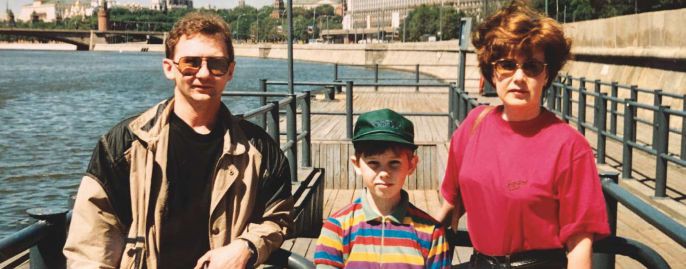
For those not familiar with the remote paradise, Sakhalin Island is a vast, mountainous and heavily forested wilderness, home to bears, foxes, otters, and sables, as well as reindeer and other deer species. There is some isolated but important industrial development, and the island is bounded on its east coast by some of the most productive waters in the North Pacific. “It’s really mad,” Revnivykh said, “Sakhalin is an amazing place, with nature and ocean.
“All in all, it was a very agreeable childhood,” he said. Among other family members who made a big difference were his two grandfathers. “They taught me how to make things by hand, to craft, shoot and hunt. They showed me how to take pictures with old film cameras and to do other boyish things. I had a lot of fun growing up.”
Next Step
Young Revnivykh had an exciting future to look forward to, although he didn’t yet know exactly what kind of work he wanted to do. He was a good student and excelled in the sciences. “I knew for sure that I would be working in a technical field. Anything that involved science and technologies I knew would be a fun area for me to work in. As for my going to university, my parents and I never quarreled. They both supported my decision when I chose the Moscow Aviation Institute.”
In 2002, Revnivykh started worked on two degrees in parallel at the prestigious Institute. He received a bachelor’s degree in Economics in 2007 and a master’s degree in Systems Analyses and Control in 2008, specializing in simulation and operation research in organizational and technical systems. When he graduated, Revnivykh joined Sergey Karutin’s team at JCS (Russian Space Systems) working on the GLONASS System of Differential Correction and Monitoring (SDCM), the Russian correlate to the U.S. Wide Area Augmentation System (WAAS).
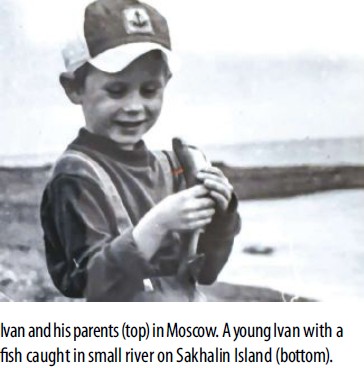
Karutin, who is now General Designer of the GLONASS system, is another person who has played a big part in Revnivykh’s life and career. “Karutin is open-minded, very smart and an extremely well organized person who always has an exact target to move towards and to reach for,” Revnivykh said. “For me he is an excellent example of a leader.”
Confirmation
“I could say my ‘GNSS Aha!’ moment came when I participated in the International Summer School on GNSS in 2009, organized by the European Space Agency in Berchtesgaden, Germany,” Revnivykh said. “There were students and young professionals from about 20 countries talking about GNSS as a key component of the world’s information infrastructure, new market capabilities and future innovative trends.”
The exchange of ideas was highly stimulating. One key takeaway for Revnivykh was that in today’s increasingly volatile, uncertain, complex and ambiguous (VUCA) world, satellite navigation requires a truly interdisciplinary approach.
“The Summer School gave me a great opportunity to exchange experience with my international colleagues, to upgrade my skills and to understand what I wanted to do with my professional life. It was all done in an informal atmosphere, and with free drinks! That helped!” Back at work, starting in 2010, Revnivykh became more and more deeply involved in SDCM system design and development. He worked to install three reference stations in Antarctica and one in Brazil. “As a GNSS professional, dealing with SDCM, and especially the work we did in Antarctica, was really pivotal for me,” he said. “I was in charge of deployment of three SDCM reference stations, dealing with preparation, transportation and organization of construction and commissioning works, all with a team of brilliant engineers.”
Revnivykh had to work within the limitations of a short Antarctic summer season, with strict demands in terms of station location and without the ability to study sites visually; the only photos available had been made by polar explorers. The Russian Antarctic station Bellingshausen was chosen as the first site. This was followed by Novolazarevskaya station in 2011 and Progress station in 2012, the last being the most difficult and complex to set up. “In our free time we discovered the surrounding area and taught some penguins to fly,” Revnivykh said. “But seriously, deploying and maintaining any facilities in Antarctica is as challenging as doing the same thing in space.”
New Connections
Th e following year Revnivykh was back in the classroom, this time in a completely new setting, and his rise on the international scene was about to begin. “I felt that I still had a few things to learn,” he said, “so I enrolled myself in the Aerospace MBA program at the Toulouse Business School in France. I can tell you, Toulouse was a hard nut. 24/7 studies in an international, multicultural team, with all possible challenges and advantages. Th e study was in English, but the life was in French, and as I had never studied this language before, I faced some day-to-day diffi culties, like dealing with the bank. Kind of important.”
His coursework focused on Northern Sea Route Impact on the Aerospace Industry. “During my studies, I was able to structure my own lessons and make good use of them practically,” he recalled, “bearing in mind the modern international approach to doing business and labor organization. What was really important and great for me was that I made good friends and connections there, with French, Australian and Japanese people.”
It was a period of great personal growth, and of course the fun was never-ending. Th e program lasted for 14 months, from 2013-2014, fi ve of which were spent as a trainee at Th ales Alenia Space in Rome, Italy. “When it was time for the internship in Rome,” he said, “I decided to bring my car down from Moscow. I wanted to be more fl exible and to be able to travel in my free time. I did the trip in my car in a week with a good friend of mine. On the way back, by the way, when I’d completed my studies, I nailed the same route in three days, including a stop at the Oktoberfest in Munich. It was a wild party and a great way to draw a line under my Europe studies!”
When in Rome, he did as the Romans did. He ate pizza and joined a rock-climbing club to free his mind and stay fi t. And he spent a summer making more of those special memories that last a lifetime.
I was busy with the optimization of an assembly line of one of telecommunication satellites, O3b and GlobalStar second generation,” he said. “Research undertaken during my traineeship revealed some interesting features not only of satellite assembly but also concerning the impact of human factors in the aerospace industry.
“Rome was very diff erent compared to France. I was working in an offi ce just above a satellite assembly line, with very kind and interesting engineers who really are proud of their job and with an extreme passion for coff ee and sun. It was not hard to complete my master’s degree at Th ales. Th e people were open and ready to answer all of my questions.”
Love Chimes In
His academic career at an end, Revnivykh had one more very important task to undertake before moving on with his professional life: getting married. “Following my return from Rome,” he said, still grinning, “a good friend of mine from university organized a party where I met Anna. She was also involved in satellite navigation. As it turned out she even knew my father and had worked with him on some projects. So she was from my world.”
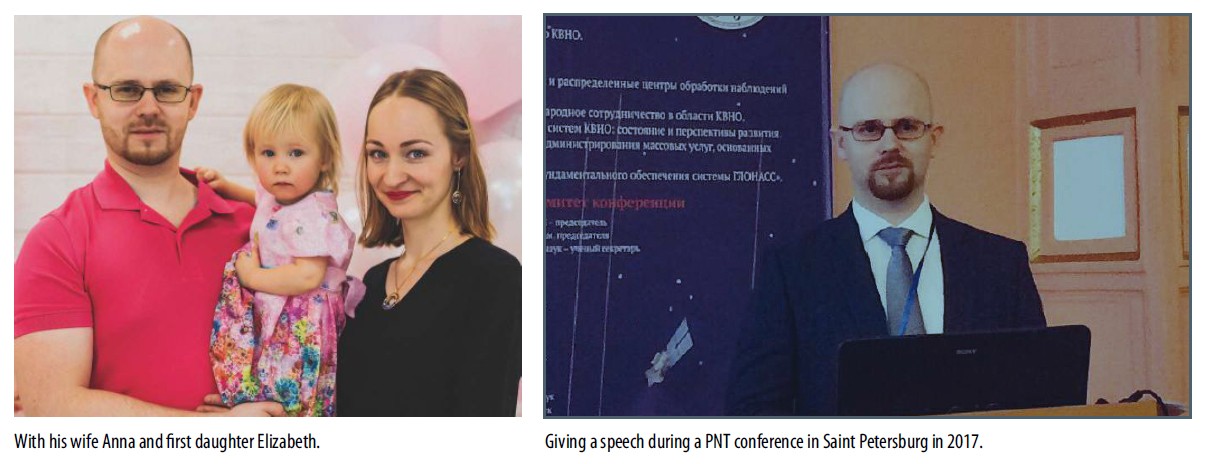
Anna is a graduate of Lomonossov Moscow State University, specialized in linguistics. She currently works in the international department of the Information and Analysis Center for Positioning, Navigation and Timing. She routinely forms part of the Russian delegation at international meetings and committees relating to satellite navigation.
“We were married in 2016 in Korolyov city,” Revnivykh said.”We honeymooned in Vienna, in conjunction with certain parallel United Nations activities: a meeting of the International Committee on GNSS!” The Ivan-and-Anna connection has been a fruitful one, as we shall learn.
Back to Work
“When I came back to Russia,” Revnivykh said, “I worked at TsNIImash for one year and then took up my current position as head of GLONASS Application Division at Roscosmos. My team deals with state R&D within the Federal Program on GLONASS Sustainment, Development and Use.”
Revnivykh is currently working to complete R&D and preparations for the launch of a small retroreflector spacecraft, and he has recently organized and ensured the implementation of R&D projects to create a GLONASS system measuring network (RIMS) on the territory of the Russian Federation and in Antarctica, to provide highprecision navigation for users. He is also charged with implementing results of a wide range of interesting and vital R&D initiatives around the expanded use of GNSS in the transport industry (ERA GLONASS).
Very importantly, Revnivykh coordinates international activities related to GNSS compatibility and interoperability. “Together with leading research institutes,” he said, “we represent the GLONASS system within UN initiatives, such as the International Committee on GNSS and ICAO.” Revnivykh therefore, in a very real way, displays the international face of GLONASS, a cornerstone GNSS program and a true model of excellence, initiative and originality for similar programs around the world.
Foundation Firm
Underpinning all the work he does at Roscosmos, Ivan Revnivykh’s bedrock remains his family. He maintains a good relationship with his parents, and runs into his father very regularly, thanks to their common work in the GLONASS program.”
His aunt still lives on Sakhalin Island, although the cousins he used to run with have moved away, one to Australia, and another to the south of Russia. “We follow each other on social media these days,” he said, “and it’s fine for all of us.”
Closer to home, his wife Anna, at the time of this writing, was on maternity leave; she delivered a second beautiful girl, Daria, in late August.
“Our daughter Elizabeth is two and we are expecting a new baby girl this summer,” Ivan said at the time, grinning more broadly than ever. A new generation of Revnivykhs sets forth on the grand adventure.
Combining life and career is a challenge, Ivan acknowledged, as so many will agree. “I try to spend as much time with my daughter as I can. We ride a bicycle together or go hiking with her sitting in a special kid carrier. I suppose with the second baby, only more and newer challenges are on the way.”
Revnivykh said he does like to apply his engineering skills to his daily, nonworking life. “My dream now is to get into CNC [computer numerical control, used in 3D printing technologies] and produce some useful cycling equipment or things for interior design.”
He still likes to get on a bike and ride like the wind. He did a lot of mountain biking in his youth. “I am still into it, now more into Enduro MTB, which delivers the fun!” he said. That’s rugged stuff, with steep uphill and downhill sections.
At the beginning of this profile we posited that Revnivykh was born with a passion for GNSS in his blood, but clearly there is more to him than that. He was born with a passion for life. He has shown it and continues to show it in his work, in his family life, and in all the rest of what he does. The glass is raised — Vashe Zdorovie, Ivan Revnivykh!


